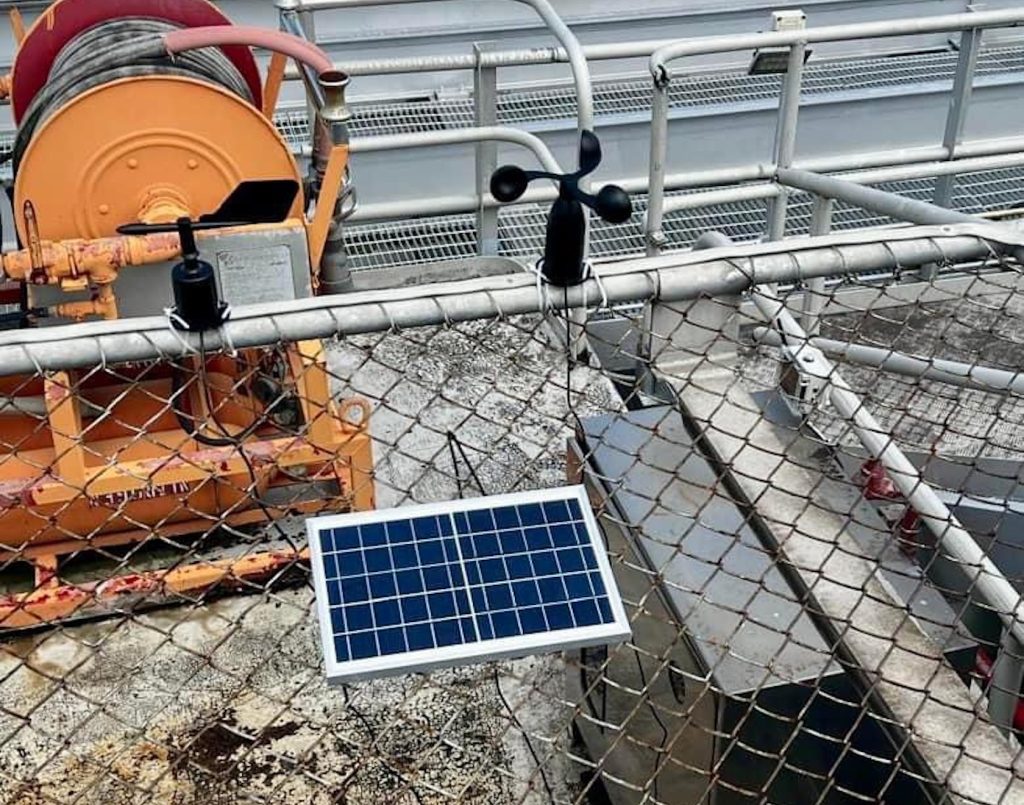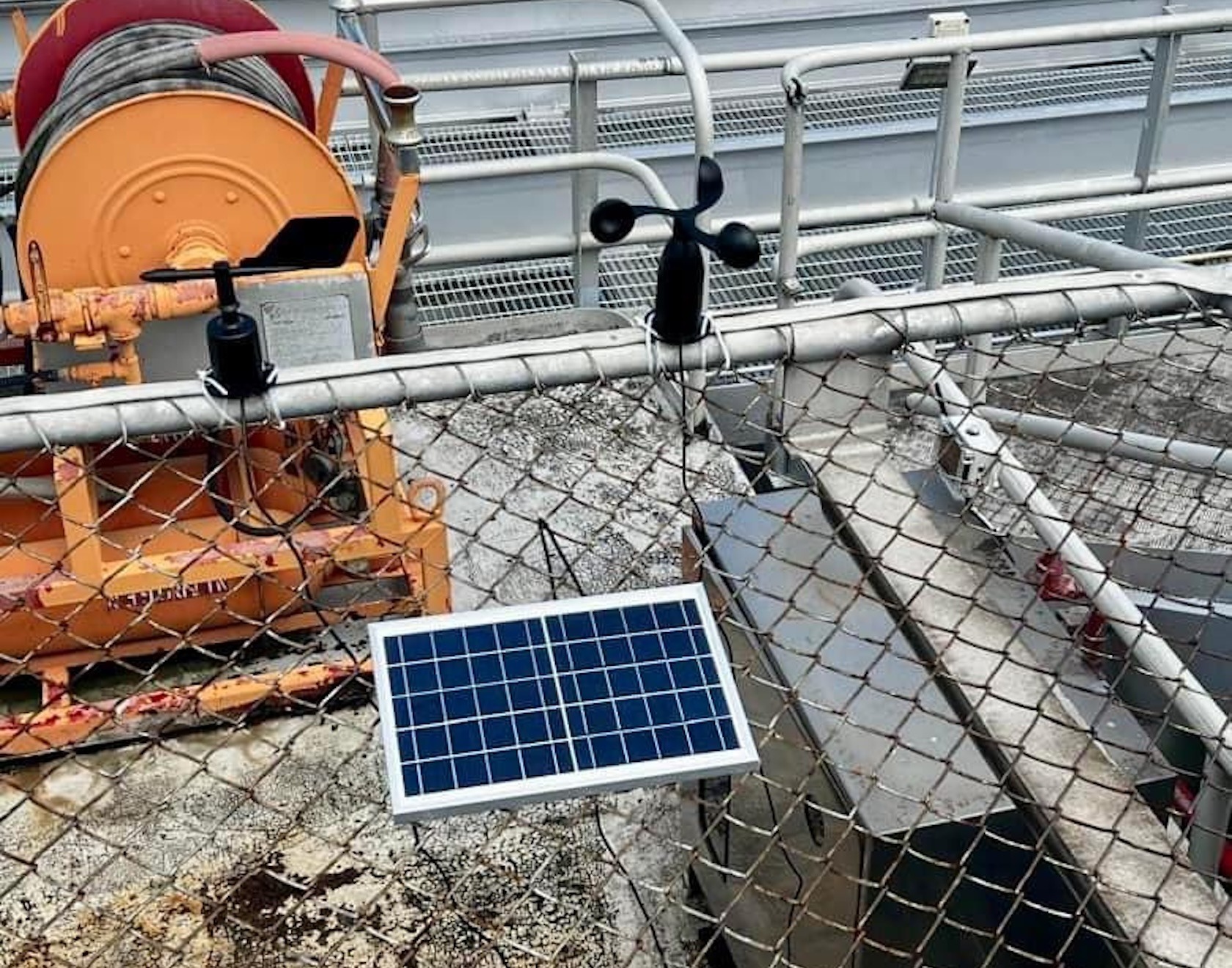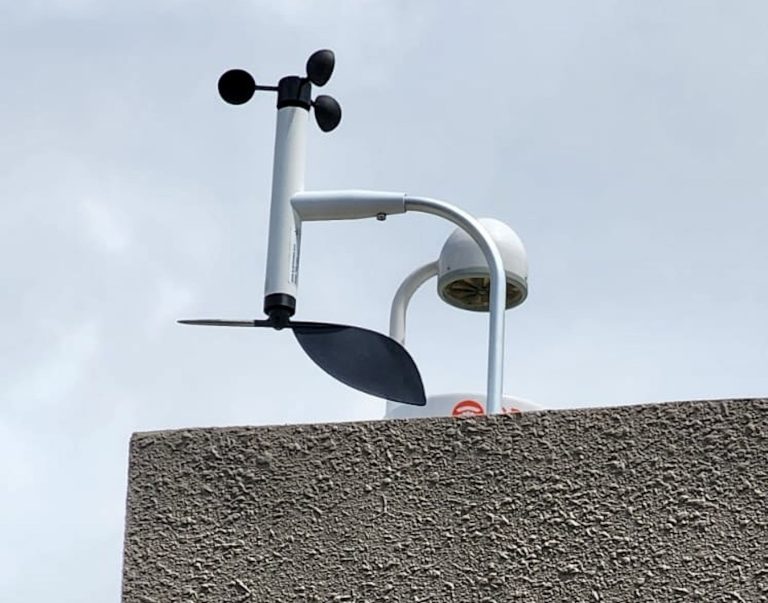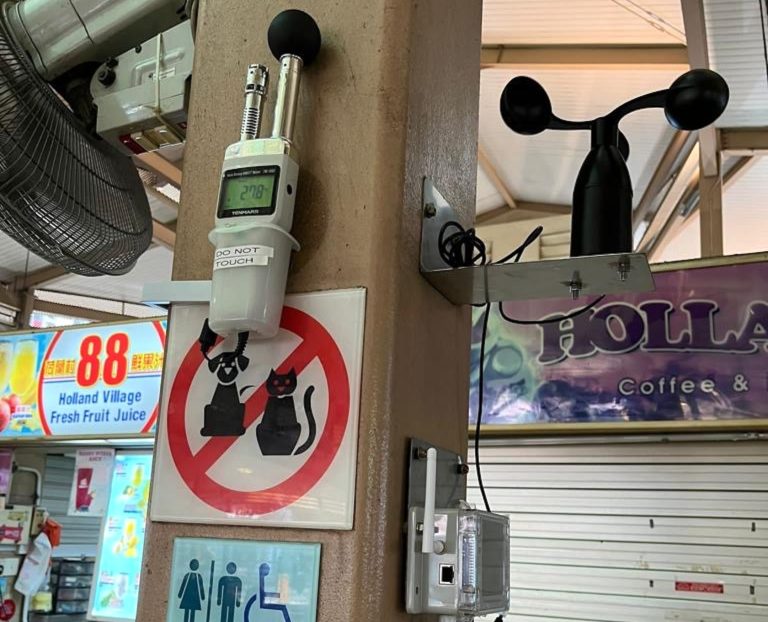
We’re thrilled to announce the successful installation and setup of a cutting-edge UbiBot IoT system on the rooftop of our building, strategically positioned near the helicopter landing pad. This exciting development marks a significant step towards exploring the potential of clean energy generation using a vertical wind turbine, harnessing the power of the wind near the Singapore coastline.
This comprehensive system, provided by our trusted partner GMM Technoworld in Singapore, is designed to capture crucial environmental data, providing the foundation for a robust feasibility study. The UbiBot IoT system is equipped with an array of high-precision sensors, meticulously chosen to monitor key meteorological parameters:
- Wind Speed: Accurate wind speed measurement is essential for determining the energy potential of a location. The UbiBot system provides real-time wind speed data, allowing us to understand wind patterns and their intensity.
- Wind Direction: Understanding the prevailing wind direction is crucial for optimizing the placement and design of a vertical wind turbine. This data will help us ensure the turbine is positioned to capture maximum energy from the wind.
- Temperature: Ambient temperature plays a role in air density, which in turn affects wind turbine performance. Monitoring temperature provides valuable context for interpreting wind data.
- Humidity: Humidity levels can impact the efficiency and longevity of wind turbine components. Tracking humidity helps us assess potential environmental challenges and plan for maintenance.
- Light: While not directly related to wind energy generation, light data can be useful for understanding overall weather patterns and solar irradiance, potentially opening up future opportunities for integrating solar energy solutions.
Why the UbiBot IoT System?
The UbiBot IoT system was selected for this project due to its exceptional capabilities and suitability for our specific needs. Its robust design and advanced features make it an ideal solution for remote environmental monitoring:
- Continuous Data Logging: The system’s primary function is to provide continuous, 24/7 data recording. This uninterrupted data stream is critical for building a comprehensive understanding of wind patterns over time, which is essential for an accurate feasibility study.
- Self-Sufficient Power: Equipped with a built-in rechargeable battery and supplemented by a solar panel, the UbiBot datalogger ensures autonomous operation. This eliminates the need for constant manual intervention and guarantees consistent data collection, even in remote or difficult-to-access locations like our rooftop.
- Reliable Performance: Provided by GMM Technoworld, a leading provider of technology solutions in Singapore, the UbiBot system is known for its reliability and accuracy. This gives us confidence in the quality of the data we are collecting.
- Seamless Integration: The UbiBot system offers seamless data transfer and integration capabilities, allowing us to easily access and analyze the collected information. This streamlined process facilitates efficient data processing and accelerates the feasibility study.
The Importance of the Feasibility Study
The data collected by this Smart IoT Wind Speed and Direction Detecting System will be instrumental in conducting a thorough feasibility study for the implementation of a vertical wind turbine. This study will assess the viability of generating clean energy on our building’s rooftop, considering factors such as:
- Wind Resource Assessment: Analyzing the collected wind speed and direction data to determine the consistency and strength of the wind resource.
- Energy Production Potential: Estimating the potential energy output of a vertical wind turbine based on the wind data.
- Economic Viability: Evaluating the cost-effectiveness of installing and operating a wind turbine, considering factors like energy production, maintenance, and potential return on investment.
- Environmental Impact: Assessing the potential environmental benefits of generating clean energy, including reducing our carbon footprint.
Looking Towards a Sustainable Future
This initiative underscores our commitment to exploring and embracing sustainable energy solutions. By leveraging the power of the wind, we aim to contribute to a cleaner, greener future for Singapore. The data gathered by this Smart IoT Wind Speed and Direction Detecting System will not only inform our decision regarding the wind turbine but also provide valuable insights into local wind patterns, potentially benefiting future renewable energy initiatives in the region. We are excited about the potential of this project and look forward to sharing the results of our feasibility study in the coming months. Stay tuned for further updates on our journey towards a more sustainable tomorrow.



